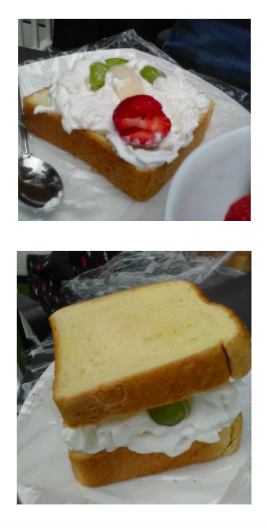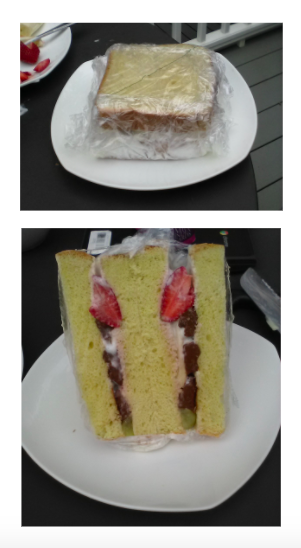It was February turning to March and the bright and motivated 5th grader, Hadley, whom I have been teaching privately for the last three years suddenly became dull and bored. Nothing could spark her interest. Her normal bookworm self was now not interested in any book in any genre. Her penchant for writing was also gone. All her academic energy and engagement was zapped. Week after week this winter, I stared a cross my screen into the face of a girl who did not want to do a single thing except quietly stare at me and say, “No.” So, I got out my secret weapon, poetry, and that worked for a while. She created a wonderful assortment of poems and made a digital book. Then one day, I introduced another poem and that dull stare came back onto her face. She was listless, passively sitting, responding to me with one-word answers. I knew I had to figure out another idea but what? We normally read a short nonfiction current event passage each week to gain insights into the world around us and to get ideas about what we might want to read, writer, or research next. I timidly suggested we read a nonfiction article I found about Japanese Fruit Sandos (sandwiches). Food! I often resort to poetry and food to engage students and usually it works! It did this time too!
I went to my trusted nonfiction resource, Newsela, and found an article in the Arts section titled, “Sweeten Your Springtime with Japanese Fruit Sandos.” I had never heard of fruit sandwiches before. They were so surprising and beautiful that I thought they might be just the idea to stir Hadley out of her doldrum. At our next session, we took turns reading the article aloud. I watched Hadley’s face intently. She was as intrigued as I was when I first read the passage. The article briefly explained the origins of the fruit sando and then gave a recipe. “Oh, we should make these!” Hadley shouted to me from across her zoom screen. And then a wisp of sadness came across her face because she knew we couldn’t get together to cook. I asked her in a cheery voice, “Do you want to see a video of them being made?” and she readily answered, “YES!” I shared my screen and showed her a YouTube channel I found called Emmymade. Emmy had a 17-minute video called “FRUIT SANDO – Japanese Fruit Sandwich Recipe Test.” Emmy’s presentation was upbeat and funny, a perfect video to engage an eleven- year-old girl. https://www.youtube.com/watch?v=QdZxLetJSZg
At our following session, Hadley wrote her own fruit sando recipe. And as luck would have it, COVID restrictions were being eased, I had gotten the vaccine, and I would be able to see Hadley again in person in a couple of weeks. Hadley’s curiosity had returned, she started a new fantasy series, she began writing and illustrating a story to enter into a contest, and most importantly she started smiling, laughing, and asking questions AGAIN. The Hadley I knew had returned!

Last week, I gathered together all the ingredients for Hadley’s fruit sando and went to her house for our first face-to-face session since the fall. We constructed sandwiches on her back porch, which conveniently connects to her kitchen. Though Emmy used Texas Toast for her bread, I found a French Toast loaf that was cut in thick slices. You might also use brioche bread cut thickly or throw caution to the wind and use pound cake! We used canned whipped cream because of time constraints, but the sandwiches will hold together better with fresh whipped cream. Hadley and I also brainstormed about other fillings: Nutella, peanut butter, and marshmallow fluff. The varieties are endless so that these sandwiches can appeal to any palette, even the finickiest of eaters!



Here are ten books to spark a budding cook’s interest:
Cooking Class Glob Feast!: 44 Recipes that Celebrate the World’s Cultures by Deanna F. Cook
Cook Anime: Eat Like Your Favorite Character – From Bento to Yakisoba by Diana Ault
Easy Peasy Japanese Dishes for Kids!: Easy but Yummy Japanese Meals Kids Can Help to Make by Heston Brown
Japanese Cooking for Kids by Kimberly Ono
Japanese Cooking Made Simple by Salina Press
Japanese Kids Cookbook: A Dedicated Selection of Japanese Recipes for Kids by Sarah Miller
Let’s Make Ramen!: A Comic Book Cookbook by Hugh Amano and Sarah Becan
Super Simple Cooking for Kids: Learn to Cook with 50 Fun and Easy Recipes for Breakfast, Snacks, Dinner, and More? By Jodi Danen
The Complete DIY Cookbook for Young Chefs: 100+ Simple Recipes for Making Absolutely Everything from Scratch by America’s Test Kitchen Kids
The Manga Cookbook: Japanese Bento Boxes, Main Dishes and More! by Chihiro Hattori

I think so many students across our country are in the doldrum… you find the missing link with food and a visit. I had my first book club without Zoom last week. I think I almost had forgotten how to even speak with my friends. I felt tongue-tied and a bit nervous and once stuck my foot in my mouth. XO
LikeLiked by 1 person
It’s wonderful how you found the way to bring back the sparkle in Hadley (that was our cat’s name)! Poems and then food – I can’t think of a more winning invitation.
LikeLiked by 1 person
Loved reading how you didn’t give up and found the way to light the spark of wonder in Hadley again! So inspiring…and delicious!
LikeLiked by 1 person
What fun! My daughter loves cookbooks and reads them like novels before selecting what we need to make…I bet she would enjoy your list!
LikeLiked by 1 person
AWESOME!!! I love how much she thought about it — blueberries with the stars pointing up 🙂 Lovely. Thanks for sharing.
LikeLiked by 1 person